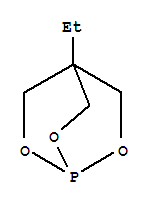| cat |
LD50 |
oral |
2500ug/kg (2.5mg/kg) |
BEHAVIORAL: CONVULSIONS OR EFFECT ON SEIZURE THRESHOLD |
Archives of Toxicology. Vol. 35, Pg. 149, 1976. |
| chicken |
LD50 |
oral |
75mg/kg (75mg/kg) |
BEHAVIORAL: CONVULSIONS OR EFFECT ON SEIZURE THRESHOLD |
Archives of Toxicology. Vol. 35, Pg. 149, 1976. |
| dog |
LD50 |
oral |
5mg/kg (5mg/kg) |
BEHAVIORAL: CONVULSIONS OR EFFECT ON SEIZURE THRESHOLD |
Archives of Toxicology. Vol. 35, Pg. 149, 1976. |
| guinea pig |
LD50 |
oral |
20mg/kg (20mg/kg) |
BEHAVIORAL: CONVULSIONS OR EFFECT ON SEIZURE THRESHOLD |
Archives of Toxicology. Vol. 35, Pg. 149, 1976. |
| hamster |
LD50 |
oral |
8mg/kg (8mg/kg) |
BEHAVIORAL: CONVULSIONS OR EFFECT ON SEIZURE THRESHOLD |
Archives of Toxicology. Vol. 35, Pg. 149, 1976. |
| mouse |
LD50 |
intraperitoneal |
1100ug/kg (1.1mg/kg) |
|
Chemical & Engineering News. Vol. 52(1), Pg. 56, 1974. |
| mouse |
LD50 |
oral |
3320ug/kg (3.32mg/kg) |
BEHAVIORAL: CONVULSIONS OR EFFECT ON SEIZURE THRESHOLD |
Archives of Toxicology. Vol. 35, Pg. 149, 1976. |
| mouse |
LD50 |
skin |
4mg/kg (4mg/kg) |
|
Science. Vol. 182, Pg. 1135, 1973. |
| mouse |
LDLo |
intravenous |
1mg/kg (1mg/kg) |
BEHAVIORAL: SOMNOLENCE (GENERAL DEPRESSED ACTIVITY)
LUNGS, THORAX, OR RESPIRATION: DYSPNEA
GASTROINTESTINAL: CHANGES IN STRUCTURE OR FUNCTION OF SALIVARY GLANDS |
European Journal of Medicinal Chemistry--Chimie Therapeutique. Vol. 13, Pg. 207, 1978. |
| quail |
LD50 |
oral |
10mg/kg (10mg/kg) |
BEHAVIORAL: CONVULSIONS OR EFFECT ON SEIZURE THRESHOLD |
Archives of Toxicology. Vol. 35, Pg. 149, 1976. |
| rabbit |
LD50 |
oral |
50mg/kg (50mg/kg) |
BEHAVIORAL: CONVULSIONS OR EFFECT ON SEIZURE THRESHOLD |
Archives of Toxicology. Vol. 35, Pg. 149, 1976. |
| rat |
LCLo |
inhalation |
10ppm/4H (10ppm) |
BEHAVIORAL: TREMOR
BEHAVIORAL: CONVULSIONS OR EFFECT ON SEIZURE THRESHOLD |
British Journal of Industrial Medicine. Vol. 27, Pg. 1, 1970. |
| rat |
LD50 |
intraperitoneal |
1020ug/kg (1.02mg/kg) |
BEHAVIORAL: CONVULSIONS OR EFFECT ON SEIZURE THRESHOLD |
Archives of Toxicology. Vol. 35, Pg. 149, 1976. |
| rat |
LD50 |
oral |
8390ug/kg (8.39mg/kg) |
BEHAVIORAL: CONVULSIONS OR EFFECT ON SEIZURE THRESHOLD |
Archives of Toxicology. Vol. 35, Pg. 149, 1976. |
| rat |
LD50 |
skin |
929mg/kg (929mg/kg) |
|
Archives of Toxicology. Vol. 35, Pg. 149, 1976. |

 EN
EN

 T+
T+ 











